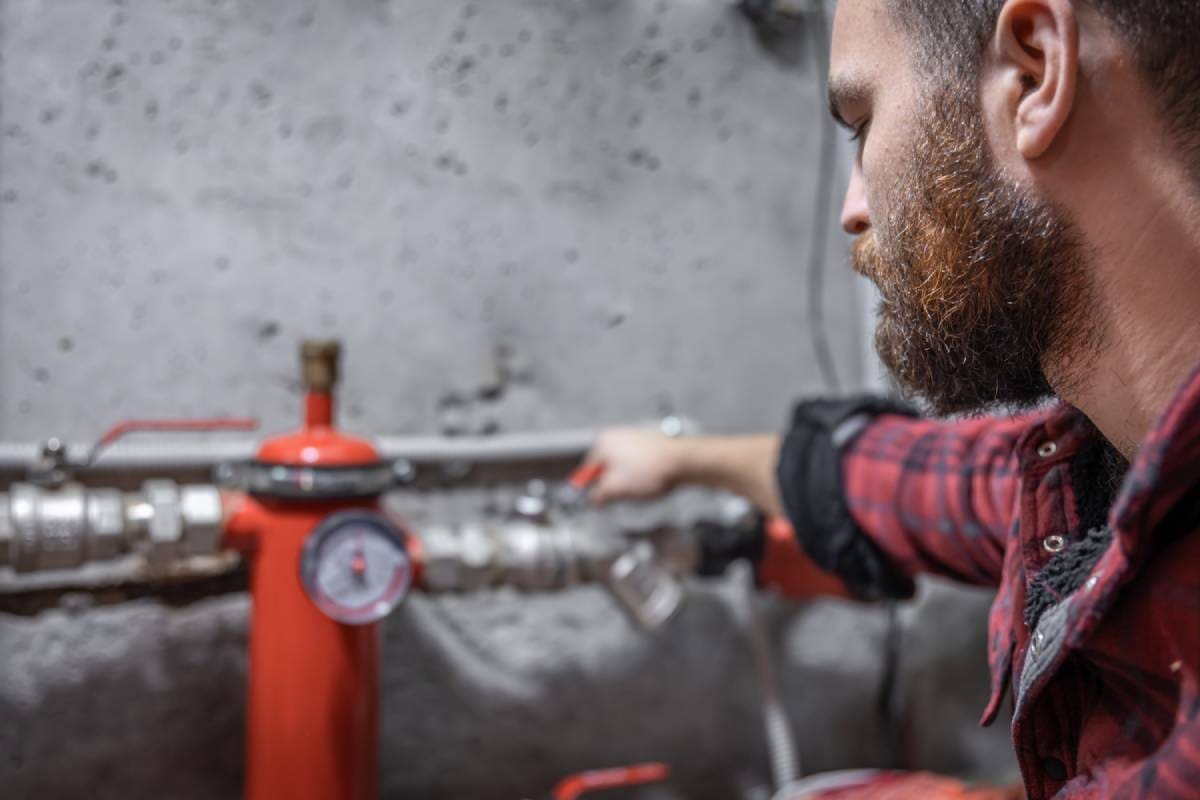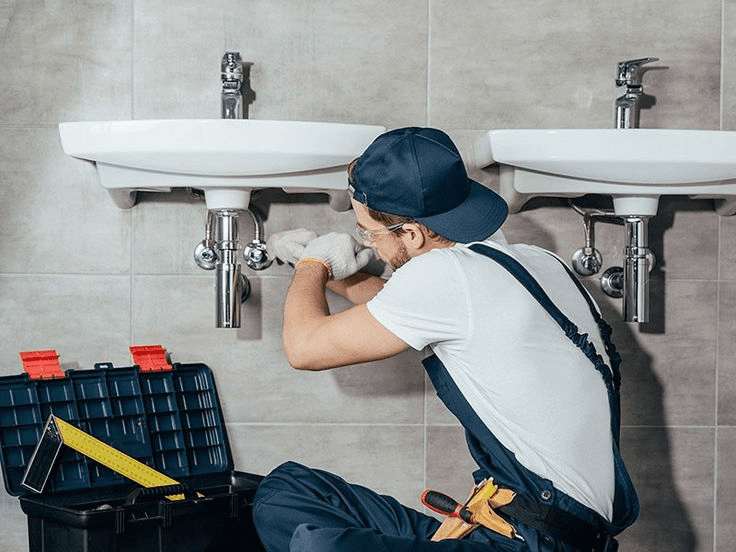Unraveling the Basics of Home Plumbing: A Beginner's Manual
Unraveling the Basics of Home Plumbing: A Beginner's Manual
Blog Article
Every person may have his or her own conception involving Plumbing Basics For Every Home: The HomeTriangle Guide.

Plumbing is a vital facet of any kind of home, in charge of providing tidy water for drinking, food preparation, and showering, in addition to eliminating wastewater safely. Comprehending the fundamentals of home plumbing is necessary for each homeowner to make sure appropriate upkeep, troubleshooting, and, if essential, repair services. In this beginner's guide, we'll cover the fundamental concepts of home plumbing to help you come to be more knowledgeable about just how it works.
Water System
The water system system brings tidy water right into your home from a municipal water source or a personal well. It contains a primary water line that links to your home's plumbing system, generally located underground. A water meter determines the quantity of water taken in, while a shut-off valve permits you to regulate the circulation of water right into your home.
Plumbing Components
Plumbing components are tools that provide water to various parts of your home and consist of sinks, taps, toilets, showers, tubs, and devices such as dish washers and washing devices. Each fixture is attached to the water system system through pipelines and fittings and might have its shut-off shutoff for upkeep or emergencies.
Water Heating Unit
The water heating system is accountable for home heating water for residential usage, including showering, cooking, and cleansing. Common sorts of hot water heater include tank-type water heaters, tankless (on-demand) hot water heater, and heatpump water heaters. The water heater is linked to the water supply system and delivers hot water to plumbing fixtures as needed.
Water drainage System
The drain system eliminates wastewater from your home and carries it away to a sewer therapy facility or septic system. It includes a network of pipes, fittings, and fixtures that transport wastewater from plumbing components to the major sewage system line or septic tank. Correct water drainage is necessary to stop blockages, back-ups, and sewage leakages.
Air flow System
The ventilation system aids preserve appropriate air pressure and prevent drain gases from entering your home. Vent pipes, likewise called vent stacks, prolong from plumbing fixtures to the roofing system, permitting sewer gases to leave safely outdoors. Air flow pipes likewise permit air to go into the drain system, assisting in smooth wastewater circulation and avoiding suction or vacuum cleaner impacts.
Common Plumbing Tools
Having the right tools on hand is vital for executing standard plumbing repair services and upkeep tasks. Usual plumbing devices consist of adjustable wrenches, monkey wrench, pliers, pipeline cutters, hacksaws, plungers, augers (or drainpipe serpents), and Teflon tape. Having these tools readily offered can assist you deal with small plumbing concerns effectively.
Basic Plumbing Repairs
While some plumbing repair services may call for expert assistance, numerous usual issues can be attended to with fundamental do it yourself techniques. Understanding how to deal with a leaky tap, unblock a drain, change a bathroom flapper, or repair a leaking showerhead can conserve you time and money on plumbing fixings.
Conclusion
Recognizing the fundamentals of home plumbing is crucial for every single property owner to keep a secure, practical, and effective plumbing system. By familiarizing yourself with the water system, plumbing fixtures, water drainage system, air flow system, common plumbing tools, and fundamental repair work, you can confidently attend to minor plumbing concerns and ensure your home's plumbing system runs smoothly.
Plumbing for Beginners: A Comprehensive Guide
If you’re a beginner when it comes to plumbing, don’t worry; you’re not alone. Plumbing may seem intimidating, but with the right knowledge and a little practice, you can handle many common plumbing issues on your own. In this comprehensive guide, we will demystify the world of plumbing for beginners, providing you with the basic knowledge and skills needed to tackle common plumbing problems and even take on some DIY plumbing projects.
The Importance of Basic Plumbing Knowledge for Beginners:
First and foremost, basic plumbing knowledge gives you a solid foundation. It helps you grasp the key concepts and terminology that are essential in this field. By learning the basics, you’ll be able to build upon that knowledge and tackle more complex plumbing tasks in the future.
Having a basic understanding of plumbing also enables you to handle common issues that may arise in your home. Picture this: a leaky faucet or a clogged drain. With some basic plumbing knowledge, you’ll have the confidence to troubleshoot and fix these problems on your own. It saves you from unnecessary expenses and the hassle of waiting for a professional to arrive.
As a beginner, learning the basics of plumbing empowers you to take care of your own home. It gives you a sense of independence and self-reliance. You’ll no longer have to rely solely on professionals for every small issue that pops up. Instead, you can handle many tasks yourself, saving time and money in the process.
Remember, everyone starts as a beginner. Embrace the learning process and take small steps to expand your plumbing knowledge. There are plenty of online resources, tutorials, and even local workshops that talk about plumbing for beginners.
Essential Tools for Plumbing for Beginners
As you start your plumbing journey, having the right tools in your toolbox is crucial. Let’s explore some of the must-have tools:
Adjustable Wrench:
This versatile tool is a staple in any plumber’s toolbox. It allows you to tighten or loosen nuts and bolts of various sizes. Make sure to have an adjustable wrench with a comfortable grip.
Pipe Wrench:
A pipe wrench is specifically designed for gripping and turning pipes. It has serrated jaws that provide a strong grip, making it easier to loosen or tighten threaded pipes and fittings.
Plunger:
The plunger is a simple yet effective tool for clearing clogged drains and toilets. It creates suction when you push and pull, helping to dislodge blockages. Keep a good-quality plunger handy for those unexpected clogs.
Pipe Cutter:
When it comes to cutting pipes, a pipe cutter is your go-to tool. It creates clean, precise cuts without damaging the pipe. Look for a pipe cutter that can handle the pipe sizes you’re working with.
Hacksaw:
A hacksaw is useful for cutting through pipes, screws, and other materials. It’s a versatile tool that can handle different cutting tasks. Remember to use a blade suitable for cutting metal.
Tape Measure:
Accurate measurements are crucial in plumbing. A tape measure allows you to measure pipe lengths, distances, and dimensions accurately. Opt for a sturdy tape measure that extends a good length.
Pliers:
Pliers come in handy for various tasks, such as gripping, bending, and cutting. Slip-joint pliers with adjustable jaws are great for gripping pipes, nuts, and bolts.

We had been made aware of that editorial about from an acquaintance on a different blog. For those who enjoyed our post kindly consider to pass it around. Bless you for your time. Don't forget to come by our site back soon.
Call Today Report this page